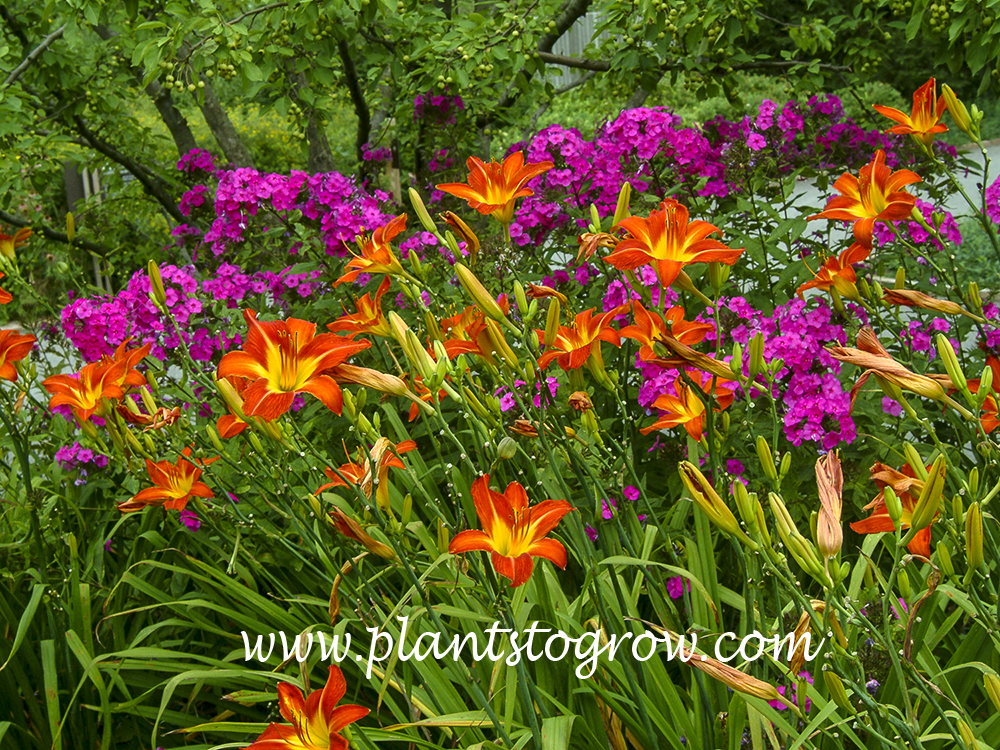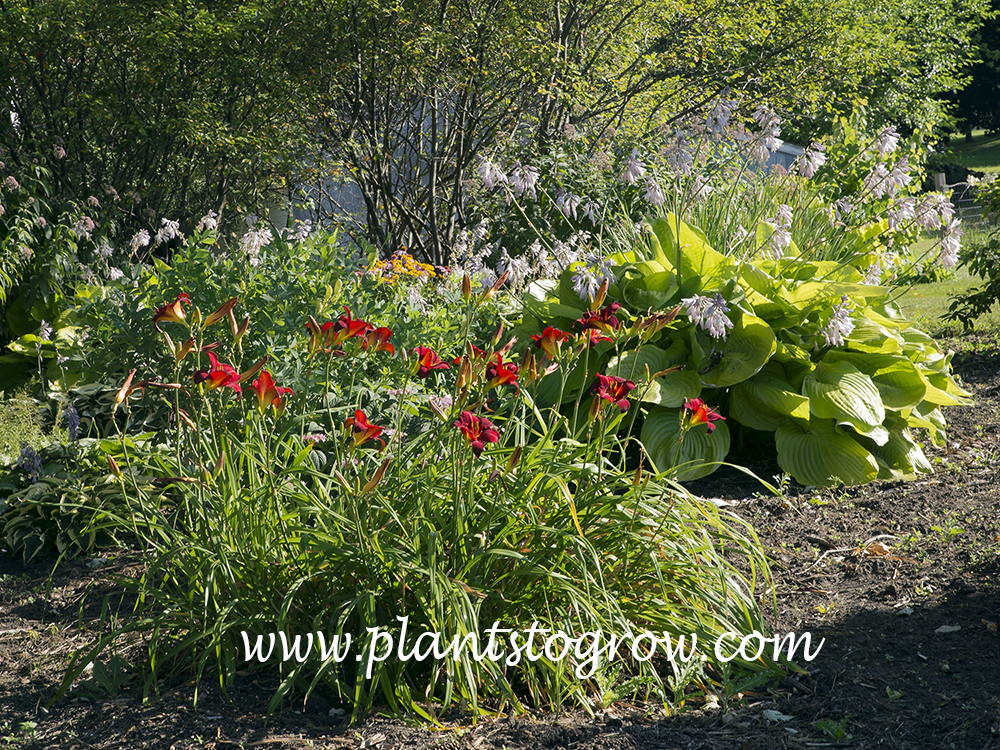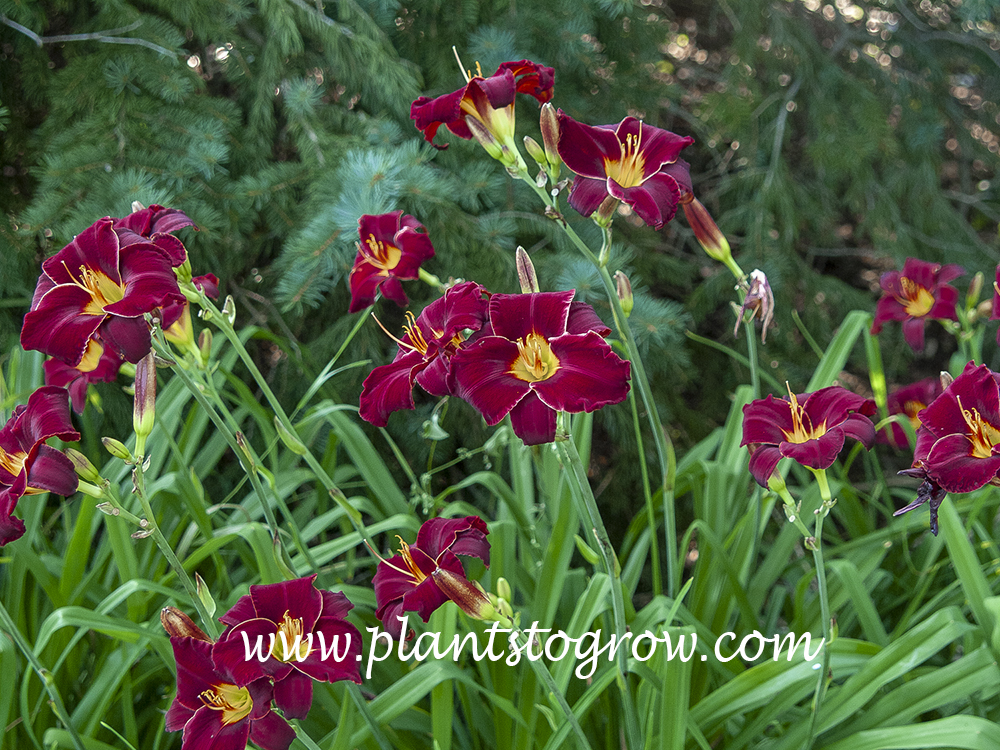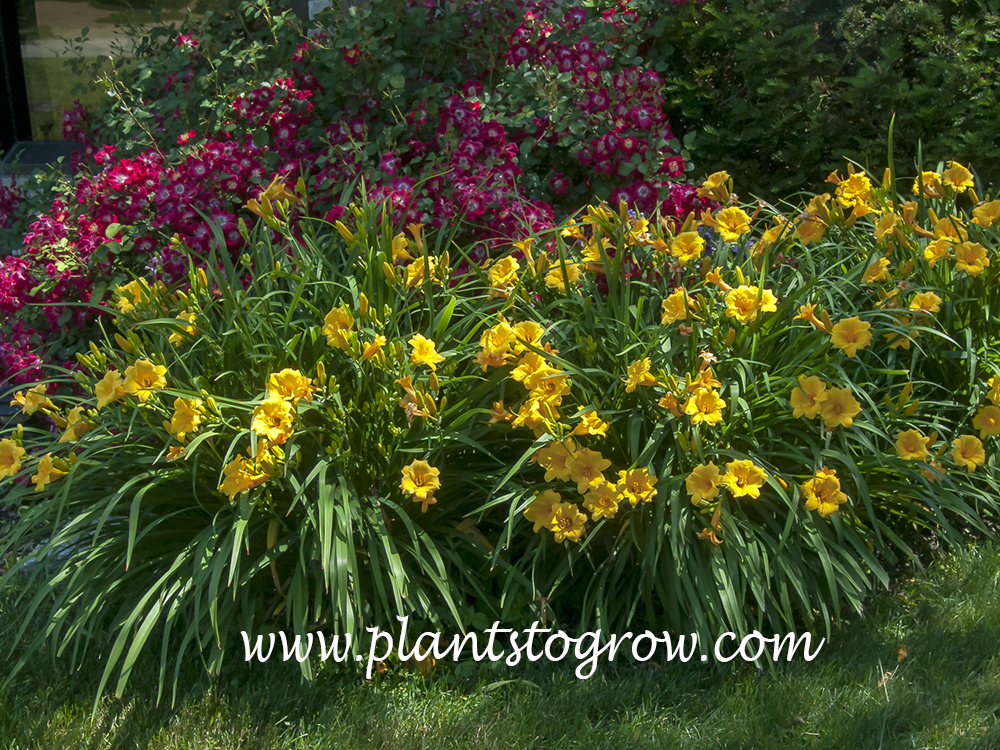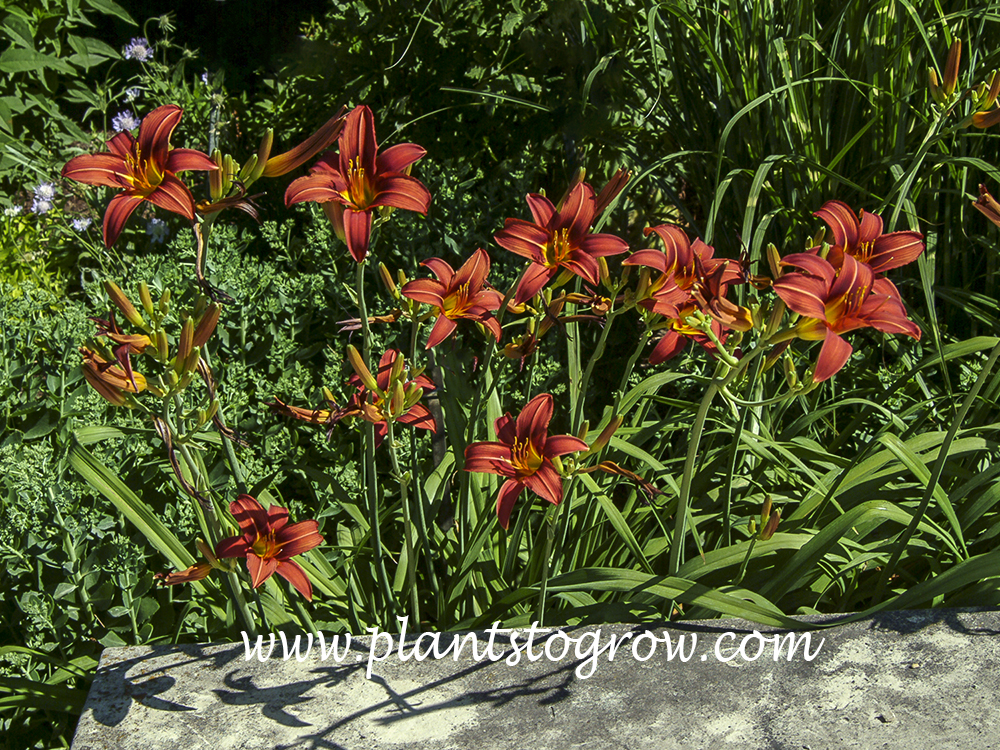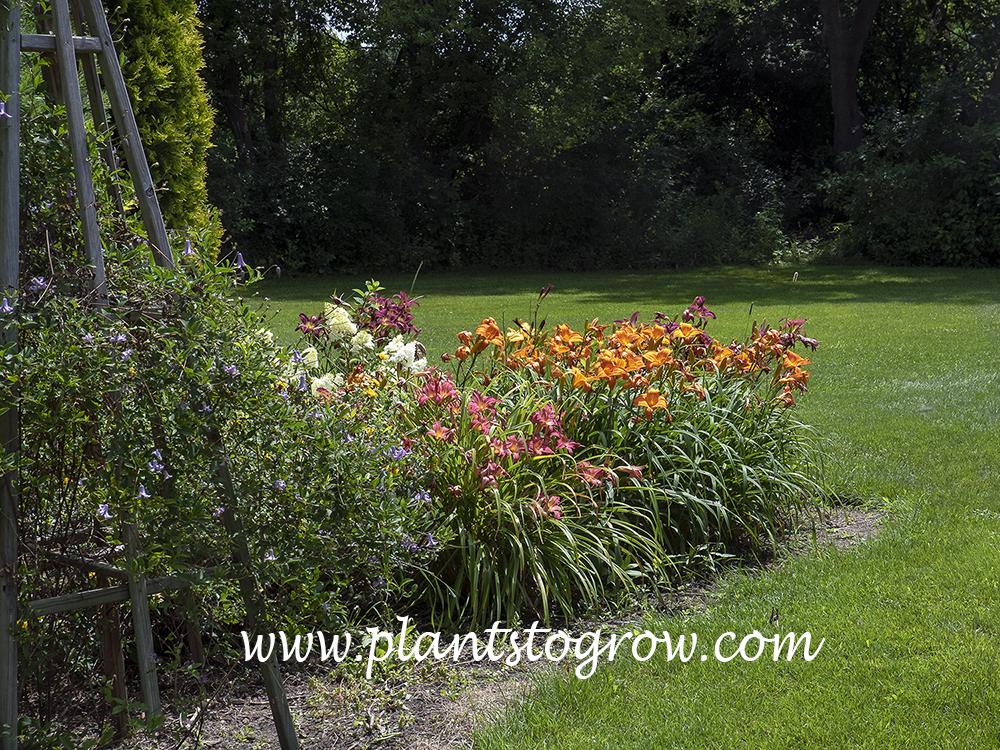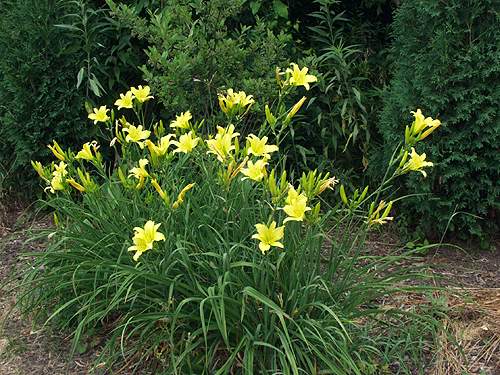| Description | The Daylily (Hemerocallis) is a rugged, durable plant that will survive neglected but responds to TLC with added flowers and clean foliage. |
|---|---|
| Pronunciation | (hem-er-o-kal-lis) |
| Plant Type | Perennials Hardy |
| Hardiness Zone | (3)4-9 |
| Sunlight | Daylilies thrive in full sun but can tolerate some shade, although more shade results in fewer flowers. |
| Moisture | They are very tolerable of most moisture conditions. Their large, somewhat fleshy root system helps them survive drought conditions. I have seen these plants in very dry conditions. They look bad, but as soon as the moisture returns, they will recover. |
| Soil & Site | average |
| Flowers | The genus Hemerocallis, which translates to "beauty of the day" in Greek, refers to the fact that each flower only lasts for one day. Despite this, the plants produce many buds over an extended period of time. Thanks to the work of plant breeders, newer cultivars have improved characteristics such as increased bud count, larger flower size, and better colors. Some cultivars even have repeated periods of bloom. While the original daylily was either yellow or orange, there are now cultivars available in just about any color except true blue. The bloom time ranges from mid to late June through August, with the peak occurring in July. After the flowering period, the plants may produce a three-chambered seed pod. The flowers are borne on stems called scapes. |
| Fruit | dry (dehiscent); loculicidal (opening from the top), many seeds |
| Leaves | Strap-like leaves that are produced from a crown just underneath the soil. Most are deciduous, but there are evergreen varieties. |
| Stems | Stems are crowns located just under the soil. |
| Roots | The roots are fibrous and fleshy. |
| Dimensions | Sizes range from 16" to 40" or greater in height. Space the plants about 12-24" depending on the desired effect and budget. |
| Maintenance | Cutting off dead flower buds (deadheading), removing dead foliage, and cutting out the old flower scapes. In general, the more flowers, the more dead flower stalks. I find that the newer cultivars tend to die back later than the older types. In the fall, cut back the foliage to a few inches above the soil. In many of my Daylily beds, I cut back the foliage, let it lay, and decompose into the soil, adding organic matter. |
| Propagation | "Often, these plants will produce seed pods. While the seeds can be planted, it's important to note that the new plants may not retain the exact characteristics of the parent plant since they are hybrids. The primary method of propagation for this group is through division. Gardeners typically carry out this process in the spring, although it is preferable to do so in August. When dividing the clumps, ensure each division has 2-3 eyes or more. It's recommended to cut back at least 50% of the foliage on these divisions, resulting in a fan-like appearance. Each division should have 2-3 eyes or more. |
| Native Site | Europe, China to Japan |
| Author's Notes | Daylily is an easy landscape perennial to grow. It has few, if any, disease or insect problems and will grow with very little care. Although there is nothing wrong with growing heirloom Daylily, many are as good as the newer varieties. Most of the newer cultivars are superior in flower production, length of bloom, and substance compared to many of the older types. They are great plants for planting in groups of 3 to 5, etc. |
| Notes & Reference | #274-Site Authors' observations and growing experiences of different Daylily (Hemerocallis), #246-American Hemerocallis Society (www.daylilies.org) |

Cart
